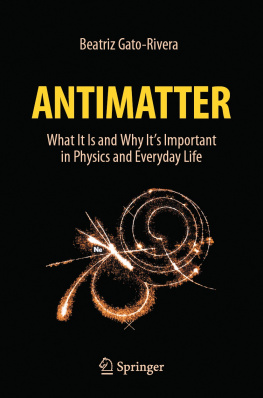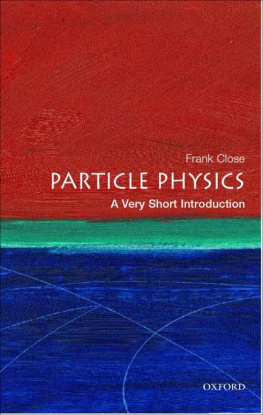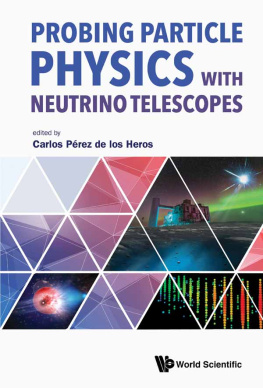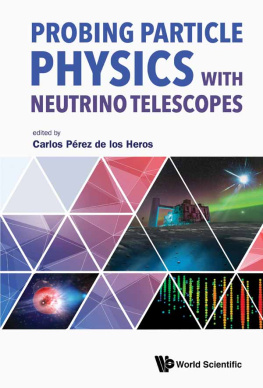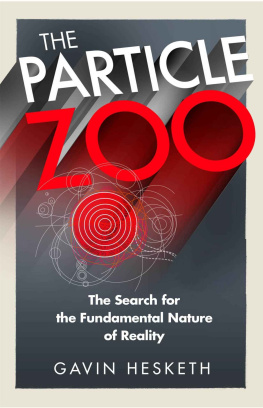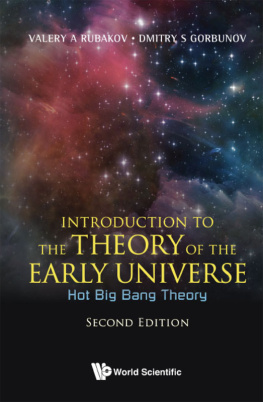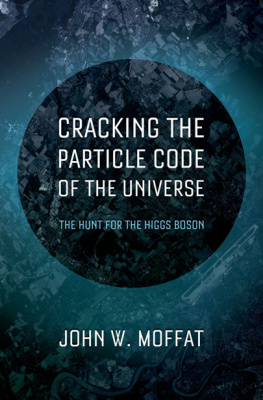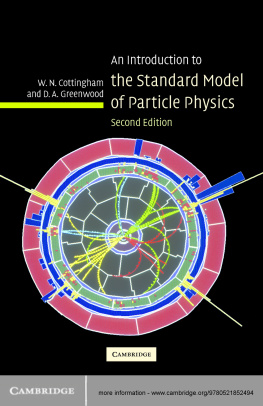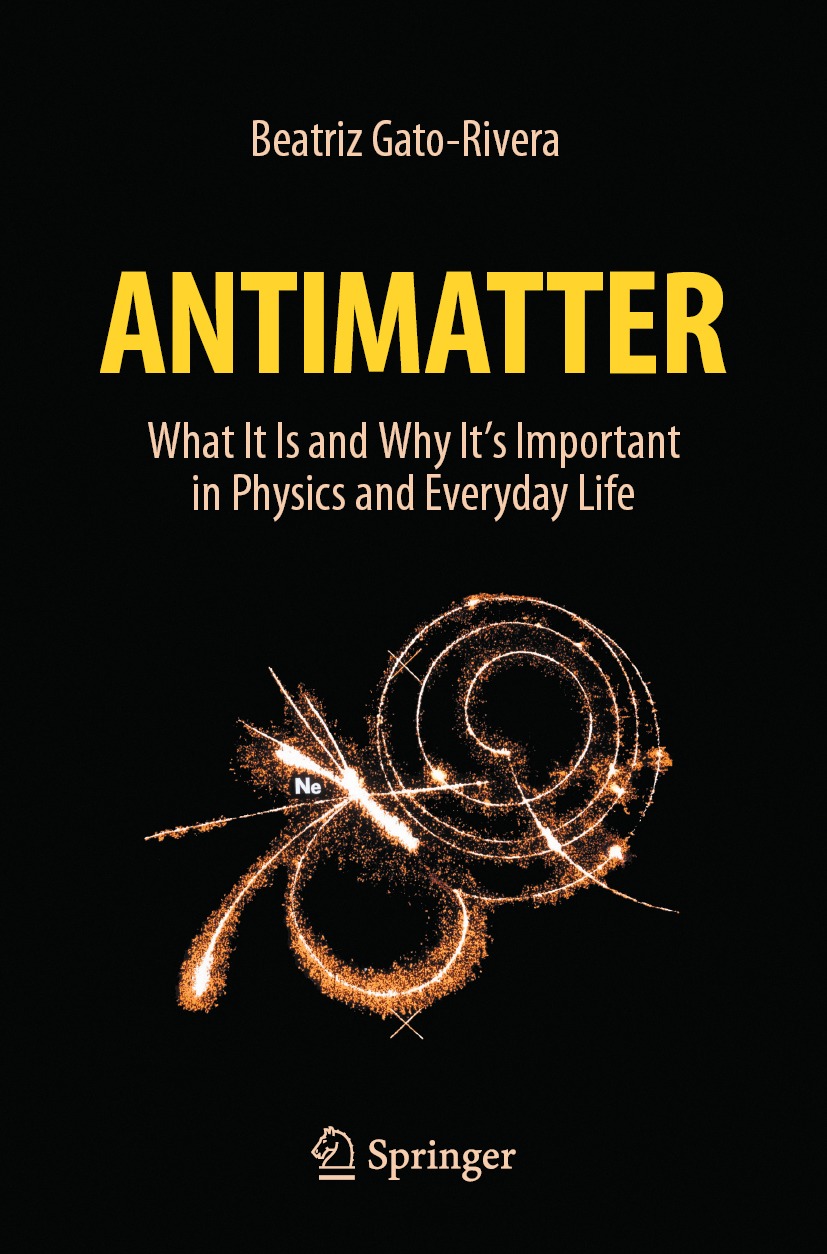Beatriz Gato-Rivera
Antimatter
What It Is and Why Its Important in Physics and Everyday Life
1st ed. 2021

Logo of the publisher
Beatriz Gato-Rivera
Instituto de Fsica Fundamental (IFF), Consejo Superior de Investigaciones Cientficas (CSIC), Madrid, Spain
ISBN 978-3-030-67790-9 e-ISBN 978-3-030-67791-6
https://doi.org/10.1007/978-3-030-67791-6
Springer Nature Switzerland AG 2021
This work is subject to copyright. All rights are reserved by the Publisher, whether the whole or part of the material is concerned, specifically the rights of translation, reprinting, reuse of illustrations, recitation, broadcasting, reproduction on microfilms or in any other physical way, and transmission or information storage and retrieval, electronic adaptation, computer software, or by similar or dissimilar methodology now known or hereafter developed.
The use of general descriptive names, registered names, trademarks, service marks, etc. in this publication does not imply, even in the absence of a specific statement, that such names are exempt from the relevant protective laws and regulations and therefore free for general use.
The publisher, the authors and the editors are safe to assume that the advice and information in this book are believed to be true and accurate at the date of publication. Neither the publisher nor the authors or the editors give a warranty, expressed or implied, with respect to the material contained herein or for any errors or omissions that may have been made. The publisher remains neutral with regard to jurisdictional claims in published maps and institutional affiliations.
Cover image: Annihilation of an antiproton against an atom of gas neon. Experiment PS-179 in the LEAR machine at CERN, 1984. CERN
This Springer imprint is published by the registered company Springer Nature Switzerland AG
The registered company address is: Gewerbestrasse 11, 6330 Cham, Switzerland
To the memory of Carl Anderson and Dmitri Skobeltzyn,
and to my husband, Bert Schellekens, for his constant support
Preface
This book is a substantially extended and updated version of the Spanish book Antimateria, published in October 2018 by the Editorial CSIC/Los Libros de la Catarata. That book was, in turn, a natural extension of several outreach talks I gave in the CSIC (Spanish National Research Council), in Madrid, on the subject of antimatter, from 2015 until 2017.
The present English version contains additional chapters due to the extensive enlargement of the existing material that led to its rearrangement. One chapter is however written completely anew. It describes the main features of antimatter, dark matter and dark energy, contrasting them with each other, in order to provide a global view of the exotic side of the Universe. I decided to add that chapter to shed some light on these topics since they seem to create some confusion. In fact, antimatter is often confused with dark matter, which, in turn, is also confused with dark energy.
Beatriz Gato-Rivera
Madrid, Spain
November 2020
Acknowledgements
First of all, I am deeply indebted to my colleague and husband Bert Schellekens (Nikhef, Amsterdam) for his continuous support, reading every single line of the manuscript and helping drawing many of the illustrations. His thoughtful comments have contributed to substantial improvements in the redaction of this book.
I am also really grateful to many colleagues for sharing with me very useful information. From cosmologists Emilio Elizalde (ICE-CSIC, Barcelona) and Pilar Ruiz Lapuente (IFF-CSIC, Madrid), I have learned very interesting facts about the early history of Cosmology and the acceleration of the Universe, respectively. From cosmic-ray experts, Manuel Aguilar (CIEMAT, Madrid) and Fernando Arqueros (UCM, Madrid), I got updates and advice about the AMS experiment, on board the International Space Station, and about the Pierre Auger Observatory, respectively. Stefan Ulmer (RIKEN, Ulmer Fundamental Symmetries Laboratory, Japan) provided the last updates on the antimatter experiments conducted at CERN. I have also benefit very much from scientific discussions with particle physicists Sergio Pastor Carpi and Juan Jos Hernndez (IFIC-CSIC, Valencia) who in addition helped me finding data and references on various issues. I wish to thank Alexander Dolgov (Novosibirsk State University and University of Ferrara), for detailed information on the current state of the research about antimatter structures in the Universe, and Horst Breuker (CERN) for a guided visit to CERNs Antimatter Factory in September 2018. I also acknowledge Jan Willem van Holten and Robert Fleischer (Nikhef, Amsterdam) for some useful information about cosmic rays and B meson systems, respectively, and Pierre Sikivie (University of Florida) for some remarks on axion detection.
I really appreciate the help and kindness of Angela Lahee and Christian Caron, from Springer, who from the very beginning supported this project. I also would like to thank the Spanish Editorial CSIC and Los Libros de la Catarata for allowing me to use the Spanish book Antimateria as basis to elaborate the present book, which is a very much extended and updated version of the former. In this respect, I am also indebted to Alberto Casas (IFT-CSIC, Madrid) and Fernando Barbero (IEM-CSIC, Madrid) for their many comments to the manuscript of that book.
Finally, I am very grateful to the National Institute of Subatomic Physics (Nikhef, Amsterdam), in The Netherlands, where part of this book was written, for hospitality.
Contents
About the Author

Beatriz Gato Rivera
also known as B. Gato, is a Staff Scientist at the Instituto de Fsica Fundamental (IFF, Madrid, Spain) of the CSIC (Spanish National Research Council). After finishing her Ph.D. on the topic of Supergravity, she spent three years at the Massachusetts Institute of Technology (MIT, Cambridge, USA) and another three years at CERN (Switzerland), working on String Theory. She has been the Principal Investigator of four research projects. In addition, at the IFF she was the head of the department of Particle Physics and Cosmology for four years, and coordinator of the Mathematical Physics group from 2008 until 2019. Her scientific interests are centered on Mathematical Physics, Particle Physics, Gravitation, and Foundations of Quantum Mechanics. In the last ten years, she has also been involved in outreach activities, especially public talks, and in 2018 she published the book Antimateria in the CSICs collection Que sabemos de?.This was the basis for the much extended and updated English version now available as the present volume Antimatter.

